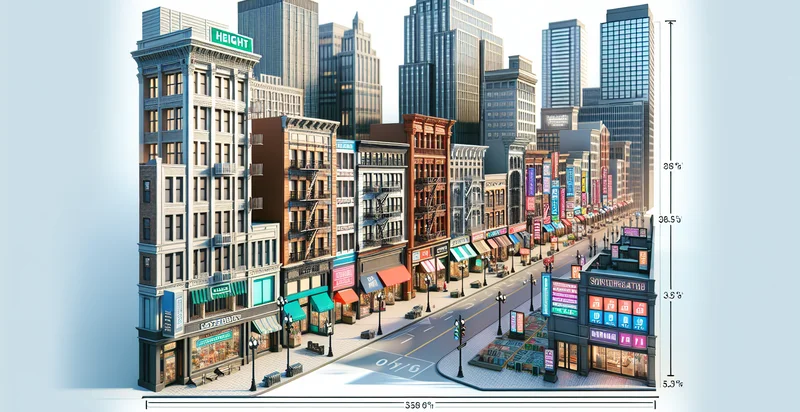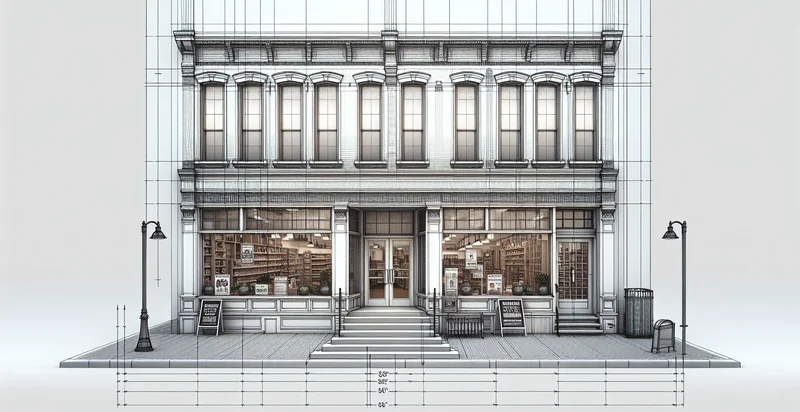Identify height of storefront in feet
using AI
Below is a free classifier to identify height of storefront in feet. Just upload your image, and our AI will predict the height of the storefront in feet - in just seconds.

Contact us for API access
Or, use Nyckel to build highly-accurate custom classifiers in just minutes. No PhD required.
Get started
import nyckel
credentials = nyckel.Credentials("YOUR_CLIENT_ID", "YOUR_CLIENT_SECRET")
nyckel.invoke("height-of-storefront-in-feet", "your_image_url", credentials)
fetch('https://www.nyckel.com/v1/functions/height-of-storefront-in-feet/invoke', {
method: 'POST',
headers: {
'Authorization': 'Bearer ' + 'YOUR_BEARER_TOKEN',
'Content-Type': 'application/json',
},
body: JSON.stringify(
{"data": "your_image_url"}
)
})
.then(response => response.json())
.then(data => console.log(data));
curl -X POST \
-H "Content-Type: application/json" \
-H "Authorization: Bearer YOUR_BEARER_TOKEN" \
-d '{"data": "your_image_url"}' \
https://www.nyckel.com/v1/functions/height-of-storefront-in-feet/invoke
How this classifier works
To start, upload your image. Our AI tool will then predict the height of the storefront in feet.
This pretrained image model uses a Nyckel-created dataset and has 20 labels, including 1-2 Feet, 10-15 Feet, 15-20 Feet, 2-3 Feet, 20-25 Feet, 25-30 Feet, 3-4 Feet, 30-35 Feet, 35-40 Feet and 4-5 Feet.
We'll also show a confidence score (the higher the number, the more confident the AI model is around the height of the storefront in feet).
Whether you're just curious or building height of storefront in feet detection into your application, we hope our classifier proves helpful.
Related Classifiers
Need to identify height of storefront in feet at scale?
Get API or Zapier access to this classifier for free. It's perfect for:
- Retail Space Optimization: Retailers can use the 'height of storefront in feet' identifier to analyze how storefront height affects customer foot traffic and engagement. By utilizing this data, businesses can optimize their display strategies and enhance overall store appeal.
- Real Estate Analytics: Real estate developers and agents can leverage the storefront height data to evaluate property potential and market trends. This information helps in determining prime commercial locations based on visibility and consumer accessibility, influencing investment decisions.
- Urban Planning: City planners and architects can apply the height classification to assess compliance with zoning laws and design standards in commercial districts. Understanding storefront height helps in maintaining aesthetic consistency and integrating new developments harmoniously with existing structures.
- Marketing Strategy Development: Businesses can use insights from storefront height to tailor marketing materials and strategies. By understanding how height impacts perception, brands can craft effective promotional campaigns that enhance visibility and customer attraction.
- Competitive Analysis: Companies can analyze competitors' storefront heights to identify market positioning and potential gaps. This competitive intelligence aids in adjusting their storefront designs to differentiate from others and attract a larger customer base.
- E-commerce Integration: Online retailers with physical locations can utilize storefront height data to synchronize their online presence with physical appeal. This ensures that their branding and imagery reflect the actual storefront, improving customer expectations and experiences.
- Environmental Impact Studies: The height of storefronts can be factored into studies assessing urban heat islands and light pollution. Businesses committed to sustainability can use this information to make informed decisions about building designs that minimize environmental impact.


